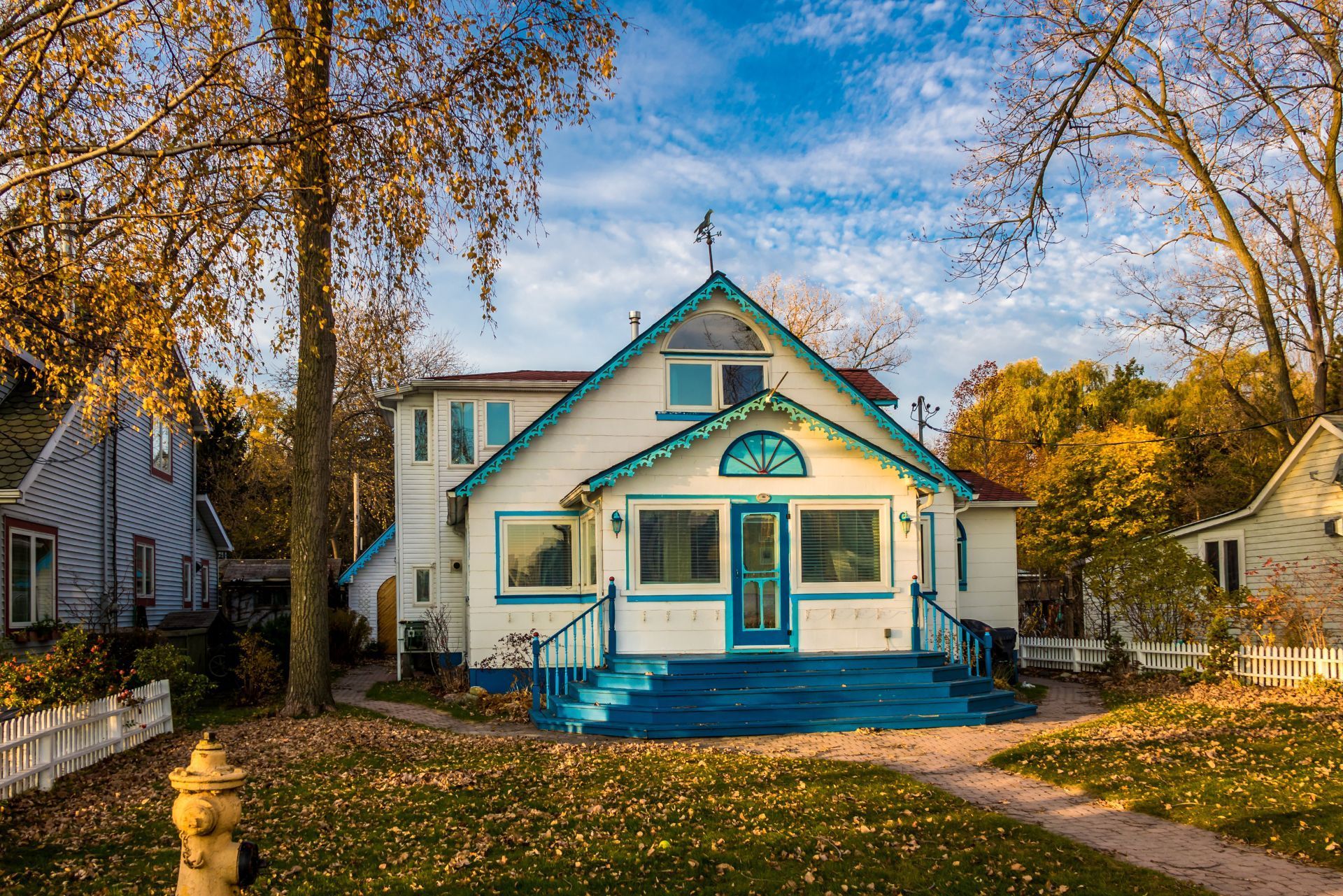Top 3 Recommended Policies

By: David Graves
Licensed Personal Insurance Specialist
425-320-4280
Owning a home in Washington state comes with many rewards—from breathtaking natural scenery to vibrant communities. But it also brings responsibilities, one of the most important being protecting your property with the right home insurance. Washington’s unique climate, geography, and legal environment mean that home insurance here has its own nuances. Whether you’re a first-time buyer or looking to update your coverage, understanding Washington home insurance is essential.
This comprehensive guide will walk you through everything you need to know about home insurance in Washington, including what it covers, how rates are determined, common risks in the state, and tips for finding the best policy for your needs.
Understanding Home Insurance Basics in Washington
What Does Home Insurance Cover?
Home insurance, also known as homeowners insurance, is designed to protect your home and personal belongings against loss or damage. A typical Washington home insurance policy covers:
- Dwelling Coverage: Protects the physical structure of your home from perils like fire, windstorms, hail, and vandalism.
- Personal Property Coverage: Covers your belongings such as furniture, electronics, and clothing if they are stolen or damaged.
- Liability Protection: Offers financial protection if someone is injured on your property and sues you.
- Additional Living Expenses (ALE): Pays for temporary housing and related costs if your home becomes uninhabitable due to a covered event.
It’s important to note that most standard policies do not cover certain natural disasters common in Washington, such as earthquakes and floods, unless you purchase additional endorsements or separate policies. Homeowners should carefully assess their individual risks and consider customizing their coverage to ensure they are adequately protected against potential threats.
Moreover, understanding the specifics of your policy can help you avoid surprises during a claim. For instance, many homeowners may not realize that personal property coverage often has limits on high-value items like jewelry or art. To protect these valuables, you might need to schedule them separately on your policy for full coverage. Additionally, keeping an updated inventory of your possessions can streamline the claims process should you ever need to file one.
Washington-Specific Insurance Considerations
Washington’s diverse geography—from coastal areas to mountainous regions—creates specific risks that influence home insurance needs and costs. For example:
- Earthquake Risk: Western Washington lies near several fault lines, including the Cascadia Subduction Zone, which poses a significant earthquake risk. Standard home insurance policies typically exclude earthquake damage, so separate earthquake insurance is advisable.
- Flooding: Certain areas of Washington, especially near rivers and low-lying coastal zones, are prone to flooding. Flood insurance is not included in standard policies and must be purchased through the National Flood Insurance Program (NFIP) or private insurers.
- Wind and Storm Damage: The state experiences strong windstorms and heavy rains, particularly in the fall and winter months, which can cause roof damage, fallen trees, and water intrusion.
In addition to these natural risks, Washington homeowners should also be aware of the implications of local building codes and regulations. For instance, homes in certain areas may need to adhere to stricter standards for wind resistance or flood mitigation, which can affect both the cost of construction and the insurance premiums. Furthermore, homeowners may benefit from discounts on their insurance premiums by implementing safety features such as storm shutters or sump pumps, which can help mitigate potential damage from severe weather.
Another consideration is the growing trend of wildfires, particularly in eastern Washington. As climate change continues to impact weather patterns, the risk of wildfires has increased, prompting homeowners in affected areas to evaluate their fire protection measures. This may include creating defensible space around their homes, using fire-resistant materials in construction, and ensuring they have adequate insurance coverage to protect against potential losses from fire damage.
Factors Influencing Home Insurance Rates in Washington
Location and Geography
Where your home is located has a significant impact on your insurance premium. Homes near the coast or in floodplains generally have higher rates due to increased risk of flooding and storm damage. Similarly, properties in wildfire-prone areas, such as parts of Eastern Washington, may face higher premiums or require additional coverage. The presence of nearby natural features, such as rivers, lakes, or mountains, can also play a role in determining risk levels. For example, homes situated near large bodies of water may be more susceptible to erosion and water damage, leading to higher insurance costs. Furthermore, urban areas with higher crime rates might see increased premiums due to the greater likelihood of theft or vandalism.
Home Characteristics
Insurance companies evaluate the age, construction materials, and condition of your home. For instance, older homes may have outdated electrical or plumbing systems that increase fire or water damage risk. Homes built with fire-resistant materials or equipped with modern safety features like smoke detectors and security systems often qualify for discounts. Additionally, the overall square footage and layout of your home can influence rates; larger homes typically cost more to insure due to the increased value of the property and its contents. Unique architectural features, such as elaborate roofing or custom-built elements, may also lead to higher premiums if they are deemed more difficult or costly to repair or replace in the event of damage.
Claims History and Credit Score
Your personal claims history and credit score can also affect your rates. Frequent claims may signal higher risk to insurers, leading to increased premiums. Additionally, many insurers use credit-based insurance scores as part of their underwriting process, as studies have shown a correlation between credit history and claim likelihood. A strong credit score can often lead to better rates, as it indicates financial responsibility. It's important to regularly review your credit report for inaccuracies and take steps to improve your score, as even minor adjustments can lead to significant savings on your insurance premiums over time. Furthermore, some insurers may offer programs or incentives for policyholders who maintain a good credit score, encouraging proactive financial management.
Deductibles and Coverage Limits
The amount you choose for your deductible—the portion you pay out of pocket before insurance kicks in—directly impacts your premium. Higher deductibles generally mean lower monthly or annual premiums but more expense if you file a claim. Similarly, higher coverage limits increase your premium but provide more protection. It’s essential to strike a balance that aligns with your financial situation and risk tolerance. Some homeowners opt for lower deductibles to minimize out-of-pocket expenses during a claim, while others may choose higher deductibles to take advantage of lower premiums. Additionally, understanding the different types of coverage available, such as replacement cost versus actual cash value, can help you make informed decisions about your policy and ensure you have adequate protection for your home and belongings.

Common Risks and Perils in Washington State
Earthquakes
Washington is one of the most seismically active states in the U.S. The Cascadia Subduction Zone, which runs off the coast, has the potential to produce a massive earthquake and tsunami. While the probability of a major quake in any given year is low, the potential damage is catastrophic. Because standard home insurance policies exclude earthquake damage, purchasing earthquake insurance is a critical consideration for Washington homeowners. Additionally, residents are encouraged to create an emergency preparedness plan that includes assembling a disaster supply kit, establishing a communication plan with family members, and identifying safe meeting places. The state also offers resources and training for residents to learn how to "Drop, Cover, and Hold On" during an earthquake, which can significantly increase safety during seismic events.
Flooding
Flooding is a significant threat in many parts of Washington, especially in river valleys and coastal areas. The state has experienced severe floods in recent decades, including the 1996 and 2007 floods that caused widespread damage. Flood insurance is typically required if your home is in a federally designated flood zone and is often mandated by mortgage lenders. Beyond insurance, homeowners should consider implementing flood mitigation strategies, such as elevating appliances and utilities, installing sump pumps, and creating barriers to redirect water flow away from their properties. Local governments often provide resources and guidance on floodplain management, which can help residents understand their risks and take proactive steps to protect their homes.
Windstorms and Severe Weather
Washington’s climate brings frequent windstorms, especially in the Puget Sound region. These storms can cause roof damage, broken windows, and fallen trees. Heavy rains can lead to water intrusion and landslides in hilly areas. Most standard home insurance policies cover wind and rain damage, but it’s important to review your policy details carefully. Homeowners should also consider investing in storm shutters or impact-resistant windows to minimize damage during severe weather events. Furthermore, staying informed about local weather forecasts and warnings can help residents prepare for impending storms, allowing them to take necessary precautions to safeguard their properties.
Wildfires
While wildfires are more common in Eastern Washington due to drier conditions, Western Washington has also seen increased wildfire activity in recent years. Homes located near forested areas should consider additional wildfire coverage and take preventive measures such as defensible space landscaping. This includes clearing away dead vegetation, maintaining a buffer zone of at least 30 feet around structures, and using fire-resistant building materials for home exteriors. The Washington State Department of Natural Resources provides valuable resources on wildfire prevention and safety, including tips for creating an emergency evacuation plan. Engaging with local community efforts to manage vegetation and participate in fire safety education can also enhance neighborhood resilience against wildfires.
How to Choose the Right Home Insurance Policy in Washington
Assess Your Coverage Needs
Start by evaluating the value of your home and belongings. Obtain a professional home appraisal if necessary to ensure you have sufficient dwelling coverage to rebuild your home in case of total loss. Inventory your personal property and consider coverage limits that reflect your possessions’ worth.
Consider Additional Coverage Options
Given Washington’s unique risks, consider adding endorsements or separate policies for:
- Earthquake Insurance: Available through the Washington FAIR Plan or private insurers, this coverage protects against earthquake damage.
- Flood Insurance: Purchase through the NFIP or private market if you live in a flood-prone area.
- Water Backup and Sewer Overflow: Covers damage from backed-up drains or sewer lines, which can be common in heavy rains.
- Identity Theft Protection: Some insurers offer this as an add-on to protect against financial loss from identity fraud.
Shop Around and Compare Quotes
Insurance premiums can vary widely among providers, so it pays to get multiple quotes. Use online comparison tools and consult with local insurance agents who understand Washington’s market. Pay attention not only to price but also to coverage limits, deductibles, and customer service ratings.
Check Insurer Financial Strength and Customer Service
Choose insurers with strong financial ratings from agencies like A.M. Best or Standard & Poor’s to ensure they can pay claims promptly. Reading customer reviews and complaint records can also provide insight into an insurer’s reliability and claims handling.
Tips for Lowering Your Washington Home Insurance Premium
Maintain Your Home
Regular maintenance can reduce the risk of claims. Fix leaks, update electrical and plumbing systems, and keep your roof in good condition. Installing storm shutters or reinforcing your roof can also reduce wind damage risk.
Install Safety and Security Devices
Smoke detectors, burglar alarms, deadbolt locks, and security cameras can qualify you for discounts. Some insurers offer premium reductions for homes with monitored security systems or fire-resistant roofing materials.
Increase Your Deductible
Opting for a higher deductible lowers your premium but means you’ll pay more out of pocket in the event of a claim. Make sure you choose a deductible amount you can comfortably afford.
Bundle Policies
Many insurers offer discounts if you bundle your home insurance with auto or other policies. This can simplify payments and reduce overall costs.
Review Your Policy Annually
Home values and personal circumstances change over time. Reviewing your policy each year ensures your coverage remains adequate and competitive. Updating your insurer about home improvements or changes can also help you qualify for new discounts.
Filing a Home Insurance Claim in Washington
Steps to Take After Damage Occurs
If your home suffers damage, acting quickly and methodically can help ensure a smooth claims process:
- Ensure Safety: Make sure everyone is safe. If necessary, evacuate the property.
- Document the Damage: Take photos and videos of all damage before making repairs.
- Prevent Further Damage: Make temporary repairs such as tarping a damaged roof or boarding up windows to prevent additional loss.
- Contact Your Insurance Company: Report the claim promptly and provide all required information.
- Keep Records: Save receipts for any emergency repairs or living expenses related to the claim.
Understanding the Claims Process
An adjuster will typically inspect the damage and assess the cost of repairs. They will work with you to determine coverage based on your policy terms. Being prepared with documentation and clear communication helps expedite the process. If you disagree with the insurer’s settlement offer, you can negotiate or seek assistance from the Washington Office of the Insurance Commissioner.
Washington State Insurance Regulations and Consumer Protections
Role of the Washington Office of the Insurance Commissioner (OIC)
The Washington OIC regulates insurance companies operating in the state to ensure they comply with laws and treat consumers fairly. The office provides resources for consumers, including complaint filing, policy guidance, and educational materials.
Mandatory Coverage and Disclosures
Washington law requires insurers to provide clear disclosures about policy terms, coverage limits, and exclusions. If you purchase earthquake insurance, the insurer must provide a separate policy or endorsement with specific information about coverage.
Consumer Rights
Washington homeowners have the right to:
- Receive clear and understandable policy information
- File complaints about unfair practices or claim denials
- Access assistance from the OIC for dispute resolution
- Cancel policies within a specified "free look" period without penalty

Conclusion: Protecting Your Washington Home with Confidence
Home insurance is a vital safeguard for Washington homeowners, offering peace of mind against the state’s unique risks—from earthquakes to floods to windstorms. Understanding what coverage you need, how rates are determined, and how to navigate claims can save you money and stress in the long run.
By carefully assessing your home’s vulnerabilities, shopping for the best policy, and maintaining your property, you can ensure your investment is well protected. Remember to review your coverage regularly and stay informed about changes in Washington’s insurance landscape.
With the right knowledge and preparation, Washington homeowners can confidently protect their homes and enjoy all the natural beauty and community life the state has to offer.

